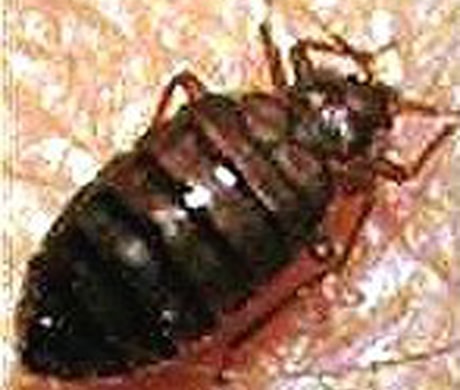TORONTO — As Toronto’s battle of the bedbug intensifies, an unusual extermination technique has emerged: bug baking, or death by heat. And with it, two approaches have developed.
On one hand, there are pest control professionals like Dan McCabe.
On Monday, he stood in an infested apartment, the room temperature a scorching 50C. Sweat poured off his face as he held up a clear container holding a dozen test-case bugs and flicked it with his index finger.
“Dead,” he said with a satisfied grin. “They’re all dead.”
The decreasing effectiveness of pesticides has meant that, while Toronto is experiencing a surge in bedbug infestations, the apple seed-sized pest is harder than ever to kill. But as a California company called ThermaPureHeat discovered, heat kills bugs and their eggs, often in one go.
“At about 110 degrees (Fahrenheit, 43C), they start coming out of the woodwork,” said Mark Joseph, owner of Magical Pest Control, a Toronto business recently certified to use the technique. “Then they start doing the death dance, just going crazy.”
To reach high temperatures, hot air is piped through wide tubing attached to a propane heater. Smaller tubes snake off to other rooms while fans circulate the air, creating a vortex. It’s essentially a life-sized convection oven.
At about 46C, it takes 20 minutes to kill adult bugs and an hour for the eggs. But the air is pumped for a few hours so heat reaches every crevice, including beneath floor boards and inside electrical sockets, where bugs tend to take refuge.
According to Changlu Wang, an entomologist at Rutgers University in New Jersey, the tactic works because each living organism has a thermal death point, a maximum tolerance for temperature.
“Once they reach that point, they will basically die of heat and water loss,” he said.
For those living with bedbugs, the process has obvious benefits. Other than removing items that may melt or explode, there’s little preparation required. The heat does not carry through to neighbouring spaces, and there are no chemicals involved. At a cost of about $1 per square foot, however, the treatment remains the most expensive method.
On the other hand, there are do-it-yourselfers like Mark Turnbull.
Turnbull awoke one winter morning with bites all over his body. He suspected bedbugs, so he scoured the Internet and discovered ThermaPureHeat’s technique.
As a construction worker with access to heating equipment, Turnbull did the next logical thing: he turned his entire house into an oven for an afternoon.
Using an industrial heater, he raised the temperature to about 60C, with certain pockets reaching 75C. He roamed the house with a thermometer gun in one hand and a fire extinguisher in the other.
“I got that equipment because of my job,” said Turnbull, a site supervisor at a restoration company. “I borrowed the truck and the equipment from my boss, came and baked my place — no problem.”
He did it a few more times to be sure the bugs were gone, then took his makeshift extermination kit to his brother’s apartment, which was also infested.
That time it didn’t go as well. The heat triggered a fire alarm sensor, prompting firefighters to race over and cut Turnbull’s experiment short.
Incidents such as this may concern Capt. David Eckerman of Toronto Fire Services. “Inherently, it sounds dangerous to me,” he said.
But Michael Linford, president of ThermaPureHeat, insists the technique has proven safe. The company has completed more than 100,000 jobs with only one fire, due to a lit cigarette near the propane.
Whether it’s done by a professional or do-it-yourselfer, the technique may not be the silver bullet for bedbugs.
